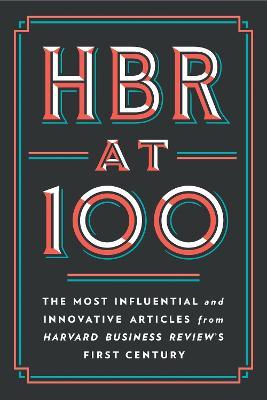For about a century, the Harvard Business Review (HBR) has been a go-to for views and insights in business and management, covering a wide range of topics in leadership, strategy, marketing, finance, and more. Published by Harvard Business Publishing, a subsidiary of Harvard University based in Brighton, Massachusetts, HBR is published six times a year and saw the debut of many management concepts and business terms.
HBR was launched by Harvard Business School's second dean, Wallace Brett Donham, in 1922 as a magazine for the institution. Donham had big plans for the publication. Not merely as a school paper, HBR "is intended to be the highest type of business journal that we can make it, and for use by the student and the business man," he wrote.

Initially, HBR focused on large-scale economic factors and developments in specific industries. But after World War II, HBR started highlighting cutting-edge management techniques developed in large corporations such as General Motors. Over the next three decades, the magazine refined its focus on general management issues topics that concerned business leaders.
With such a long history and wealth of material, choosing entries for HBR at 100: The Most Influential and Innovative Articles from Harvard Business Review's First Century couldn't have been easy – where does one even begin? And even after it's out, some will doubt whether this collection represents the best and brightest from the first 100 years of this business periodical.
"This book isn't meant to be a history of HBR, nor a chronology of how it has transformed over time," writes HBR editor-in-chief Adi Ignatius. "Rather, it is a showcase of the articles that present some of our best and most enduring ideas over the past century."
And how those ideas endure, like evergreen radio hits. Disruptive innovation. Emotional intelligence. Blue ocean strategy. The power of small wins. Design thinking. Marketing myopia. That these are still being discussed and bandied about today is a testament to the seeming timelessness of certain business and management topics.
A cursory look at the chapter titles alone suggests effort was taken to ensure selections are relevant to current issues and trends. Additional material tacked onto some chapters grant more insight and angles, including extracts from the HBR, retrospective musings on articles, and the editor's notes.
Kathleen Reardon, author of "The Memo Every Woman Keeps in Her Desk", published in 1993, looks back at her article on workplace sexism, which persists to this day. When one sees that the piece that follows is titled "Why Do So Many Incompetent Men Become Leaders?", written by Tomas Chamorro-Premuzic and published twenty years later, one has to suppress a chuckle.
Perhaps the arrangement of some chapters are intentional, to create some semblance of continuity for the related topic. "Harnessing the Science of Persuasion" (2001) is followed by "Barriers and Gateways to Communication", published way back in 1952 and includes retrospective commentary written by John J. Gabarro, a professor at Harvard Business School, in 1991. After "That Discomfort You're Feeling Is Grief" (2020) is "What Psychological Safety Looks Like in a Hybrid Workplace" (2021), which captures the workplace atmosphere during and after the pandemic.
"The Business of Artificial Intelligence", published in 2017, can now be read with an eye on recent developments. Six years isn't a long time for many, but even without the mental time warp brought on by the pandemic, so many advancements and changes have taken place that one marvels at how many. One pores over the chapter to see if any predictions matches reality, and if they do, how closely.
This cannot be considered a "perfect" collection, given the editor's admission of recency bias (only five of the 30 total articles are from HBR's first 60 years) and the potentially unseemly tone of at least one article ("Management Time: Who's Got the Monkey?", from 1974). "Some of the articles may use language that, by today's standards, may seem outdated or even objectionable," writes the HBR editor-in-chief. "We've chosen to preserve the original wording, but we acknowledge that certain passages may seem jarring."
And this collection, like HBR itself, is tailored to those in business, management and various industries. General audiences without some grounding in the concepts or topics being discussed may struggle to engage with the material or relate to the authors.
Nevertheless, it is still a well-designed and carefully curated compendium of "the most widely read and admired pieces in the history of business thinking" and a welcome addition to the bookshelves of businesspeople, managers and executives.
Get HBR at 100: The Most Influential and Innovative Articles from Harvard Business Review's First Century here.





Comments (0)
There are no comments for this article. Be the first one to leave a message!